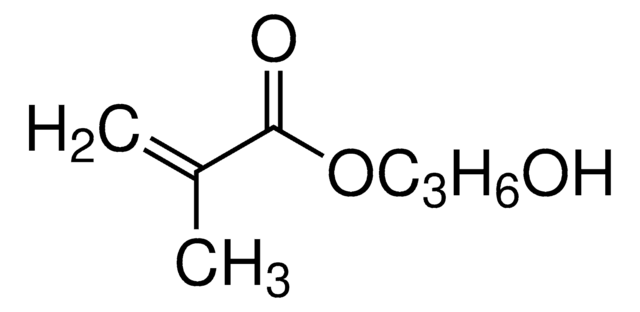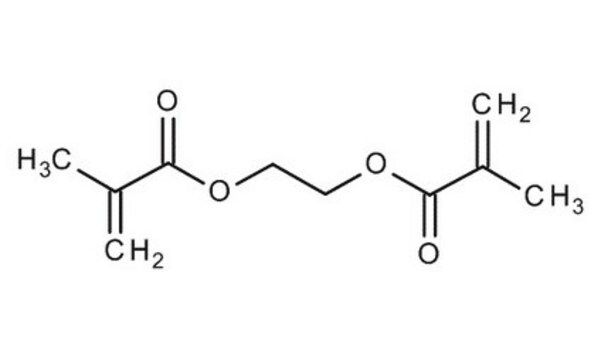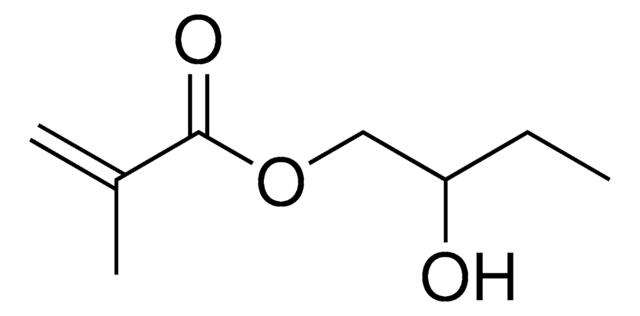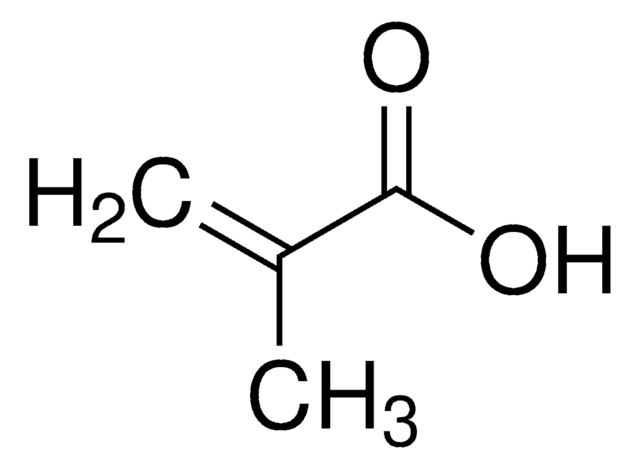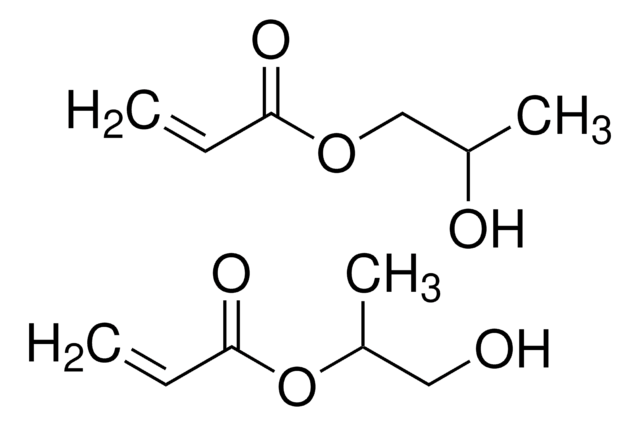128635
2-Hydroxyethyl methacrylate
contains ≤250 ppm monomethyl ether hydroquinone as inhibitor, 97%
Sinônimo(s):
1,2-Ethanediol mono(2-methylpropenoate), Glycol methacrylate, HEMA
About This Item
Produtos recomendados
densidade de vapor
5 (vs air)
Nível de qualidade
pressão de vapor
0.01 mmHg ( 25 °C)
Ensaio
97%
Formulário
liquid
contém
≤250 ppm monomethyl ether hydroquinone as inhibitor
índice de refração
n20/D 1.453 (lit.)
p.e.
67 °C/3.5 mmHg (lit.)
densidade
1.073 g/mL at 25 °C (lit.)
temperatura de armazenamento
2-8°C
cadeia de caracteres SMILES
CC(=C)C(=O)OCCO
InChI
1S/C6H10O3/c1-5(2)6(8)9-4-3-7/h7H,1,3-4H2,2H3
chave InChI
WOBHKFSMXKNTIM-UHFFFAOYSA-N
Procurando produtos similares? Visita Guia de comparação de produtos
Categorias relacionadas
Descrição geral
Aplicação
Palavra indicadora
Warning
Frases de perigo
Declarações de precaução
Classificações de perigo
Eye Irrit. 2 - Skin Irrit. 2 - Skin Sens. 1
Código de classe de armazenamento
10 - Combustible liquids
Classe de risco de água (WGK)
WGK 1
Ponto de fulgor (°F)
222.8 °F - closed cup
Ponto de fulgor (°C)
106 °C - closed cup
Escolha uma das versões mais recentes:
Já possui este produto?
Encontre a documentação dos produtos que você adquiriu recentemente na biblioteca de documentos.
Os clientes também visualizaram
Artigos
The manufacture of monomers for use in ophthalmic applications is driven by the need for higher purity, improved reliability of manufacturing supply, but ultimately by the need for the increased comfort, convenience, and safety of contact lens wearers. Daily wear contact lenses have the potential to fill this need for many customers; however, their widespread use is constrained by higher costs compared to weekly- or monthly-based lenses. New approaches that improve cost structure and result in higher quality raw materials are needed to help make contact lenses more affordable and accelerate growth of the contact lens market.
Global Trade Item Number
| SKU | GTIN |
|---|---|
| 128635-1KG | 4061838725806 |
| 128635-5G | |
| 128635-100G | |
| 128635-18KG | 4061838725790 |
| 128635-500G | 4061838725813 |
| 128635-5KG |
Nossa equipe de cientistas tem experiência em todas as áreas de pesquisa, incluindo Life Sciences, ciência de materiais, síntese química, cromatografia, química analítica e muitas outras.
Entre em contato com a assistência técnica




